
Key Takeaways
- Radiant cooling works by circulating chilled water through panels installed inside walls, floors or ceilings.
- It offers energy savings and improved comfort with even cooling and no drafts.
- On the downside, radiant cooling may cause condensation and water damage.
Are you upgrading your current air conditioning system? Do you want to avoid the expense of a central air conditioner or eliminate the risk of spreading allergens through a forced-air system?
Radiant cooling is a great alternative to keep your home cool. It won’t rack up your energy bills or fill your home with pollen, allergens, and dander.
You may be familiar with radiant floor heating or radiant wall heating, but since radiant cooling isn’t that popular, you might wonder what it is, how it works, and whether you can use your radiant heating system for cooling. This blog will answer all your questions!
How Does Radiant Cooling Work?
Radiant cooling systems are made of chilled slabs or beams that are generally installed inside the ceilings, floors, or walls. These systems work by circulating chilled water through the panel. As a result, the cooled surface absorbs infrared heat from people and objects in the room, creating a direct and comfortable cooling effect.
Radiant cooling systems use water-filled tubing; hence, they are also alternatively known as hydronic cooling systems. The chilled water runs through the fitted pipes and cools the slabs or beams.
The supply water used should be moderately warm, between 58F and 65F. The floor will be cooled between 68F and 75F. The supply water temperature must be controlled to avoid getting closer to the dew point by keeping the surface temperature above 66F while maintaining the relative humidity below 50%.
Instead of blowing cold air like traditional air conditioners, these systems absorb heat from your body and surrounding objects, creating a gentle and consistent cooling effect. This results in a more stable temperature throughout the space, eliminating the uneven cooling and discomfort caused by air currents.
Hydronic Cooling Vs. Hydronic Heating
When air comes in contact with these slabs or beams, there’s an exchange of energy through radiation, and as a result, the hot air cools down. The water in pipes pumps out periodically, and fresh cold water replaces it.
In short, hydronic cooling is just like hydronic heating but in reverse. The only difference in radiant cooling is that the heat is transferred from the room to the chilled water pipes installed in panels.
Since radiant cooling does not cool indoor air by removing humidity, even opening a window on a hot, humid day may increase moisture content. Therefore, this system works best in homes with a dehumidifier or dry climate areas. In medium-to-large buildings, using radiant cooling with a Dedicated Outdoor Air System (DOAS) works best. The DOAS system provides the exact amount of ventilation required by buildings to get rid of the humidity. A whole-house dehumidifier can also be used.
Types of Radiant Cooling
Radiant cooling systems are of two major types.
1. Chilled Slabs
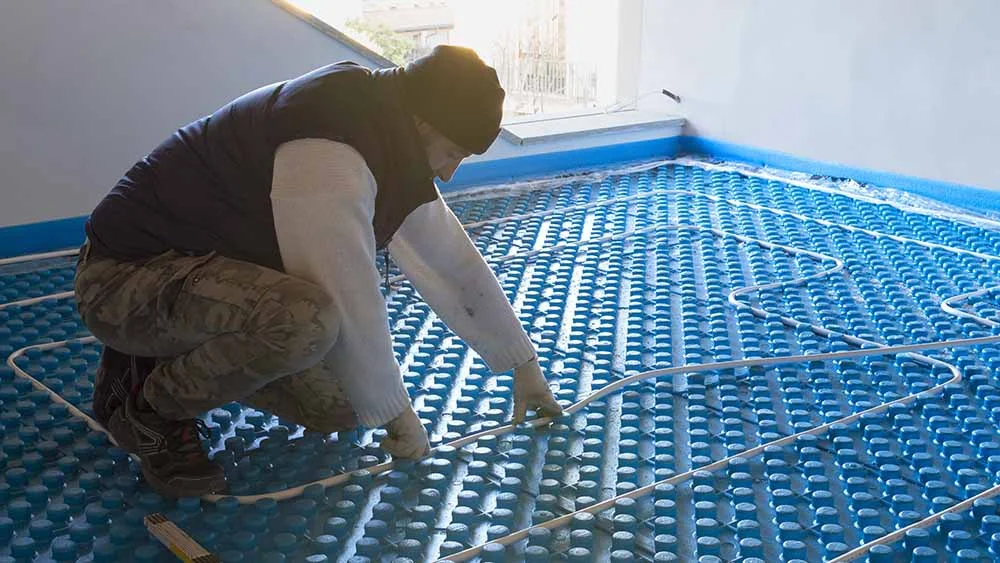
These systems are generally known as Thermally Activated Building Systems (TABS). In this system, the cooling pipes are fitted behind the metal slabs that are installed on the floor, walls, or ceiling. The cold water running through these pipes chills the slabs. The slabs then cool all the surfaces they come in contact with and which in turn help cool down the air in that space.
As compared to radiant cooling panels, these slabs have higher thermal mass. Thermal mass is the ability of a certain material to resist change in its temperature. Thus having higher thermal mass enables radiant panels to handle temperature fluctuations throughout the day better.
The per square foot installation cost is less for radiant slabs as compared to radiant beams. On the other hand, because this system does not come in direct contact with the air, these slabs need to cover a larger area.
2. Chilled Beams
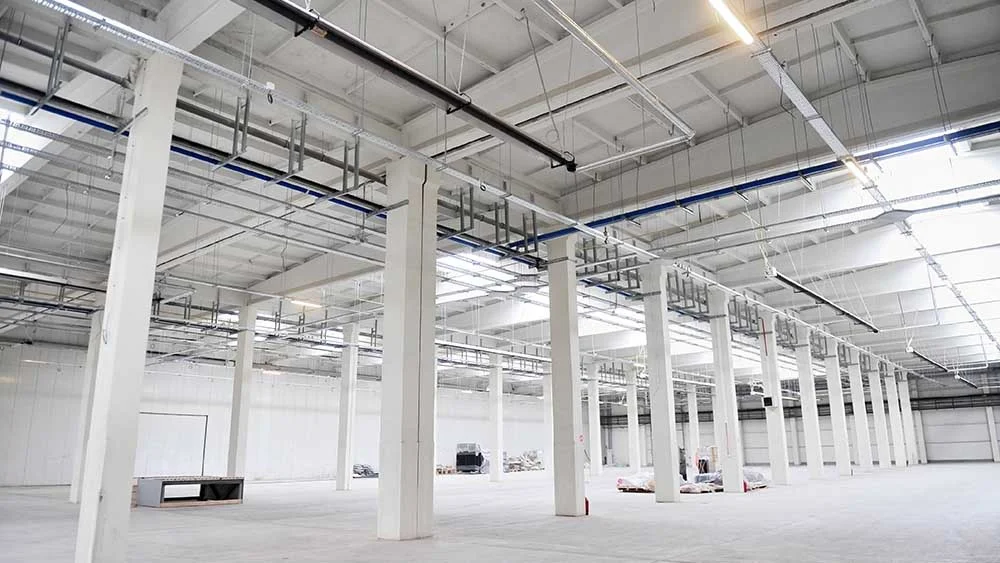
This system is used for both radiant heating and cooling. These panels are often referred to as chilled beams. Water pipes are integrated into a heat exchanger (beam) in these panels. These are mostly attached to ceilings or hung from them, but they can be installed on walls too. These panels are more efficient since the cooling pipes are actively in contact with the air.
The panels are light in weight and have lower thermal mass. Moreover, they are ideal for retrofitting as you won’t have to tear up the ceiling of your whole house or building to install them. Instead, they can easily be attached to the ceiling of any building.
Both the types, i.e., chilled slabs and chilled beams, use chilled water pipes and work on the same principle for radiant cooling.
Can You Use the Radiant Heating System for Cooling as Well?
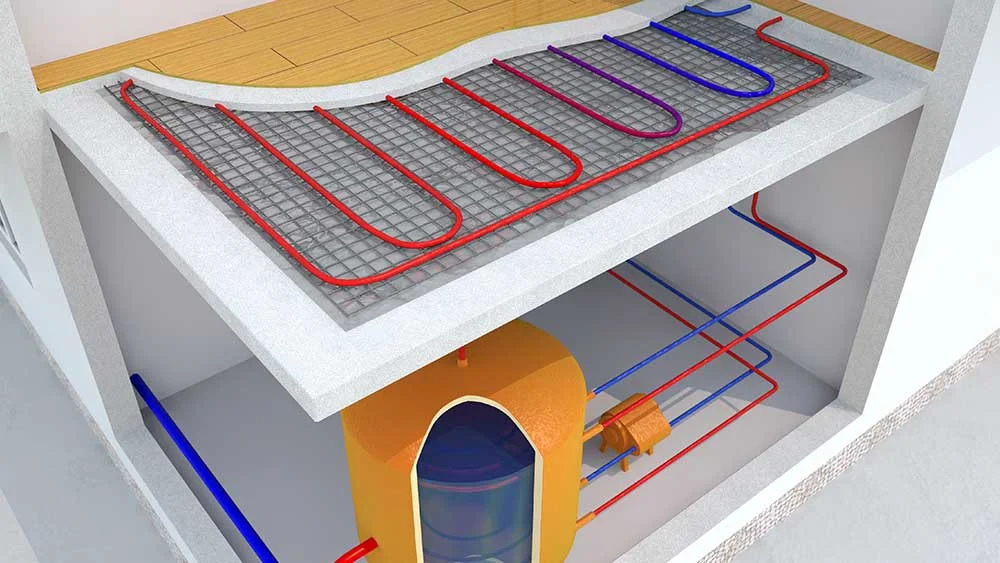
You can use a single air conditioning system for both radiant heating and cooling. However, the problem with radiant heating is that most radiant slabs are installed inside walls and floors. Whereas for cooling, ceiling panels are more efficient as compared to radiant floor systems, as floor systems decrease the overall cooling efficiency of the system.
The reason behind this lies in the way any hydronic heating and cooling system works. To ensure the best performance, the system has to be installed where the most heat transfer takes place, and the temperature difference between air and radiant heating system is maximum.
Radiant floor heating works more efficiently than radiant floor cooling because when cold air comes in contact with the radiant heating system, the air gains heat energy and moves up, whereas cold air stays low in the room. So, the temperature difference between air and radiant heating system is the highest near the floor.
On the other hand, ceiling panels are more effective for cooling since warm air usually rises and stays high up in the room. So the ceiling is where more air comes in contact with the radiant system.
Secondly, ceilings are more exposed, whereas floors are mostly covered with furniture. So, ceiling panels ensure more air comes in contact with the chilled surfaces, enhancing the system’s effectiveness. That is why radiant ceiling slabs or beams work best for cooling purposes.
However, radiant wall heating is equally effective for heating as it is for cooling because it is equally exposed to the air near the ceiling as well as the air near floors.
Equip your HVAC system with smart features and achieve the perfect balance between comfort & savings.
Learn more
Benefits of Radiant Cooling
Here are some upsides of using this cooling system for your home:
1. Reduced Operating Costs
Radiant cooling reduces operational costs in two ways. Firstly, hydronic radiant systems use water which can absorb more heat than air. Hence you have to pump out and cool down water less frequently. Secondly, it does not require as much maintenance as forced-air-conditioning systems. As a result, you’re able to cut down on operating costs.
2. Improved Energy Efficiency
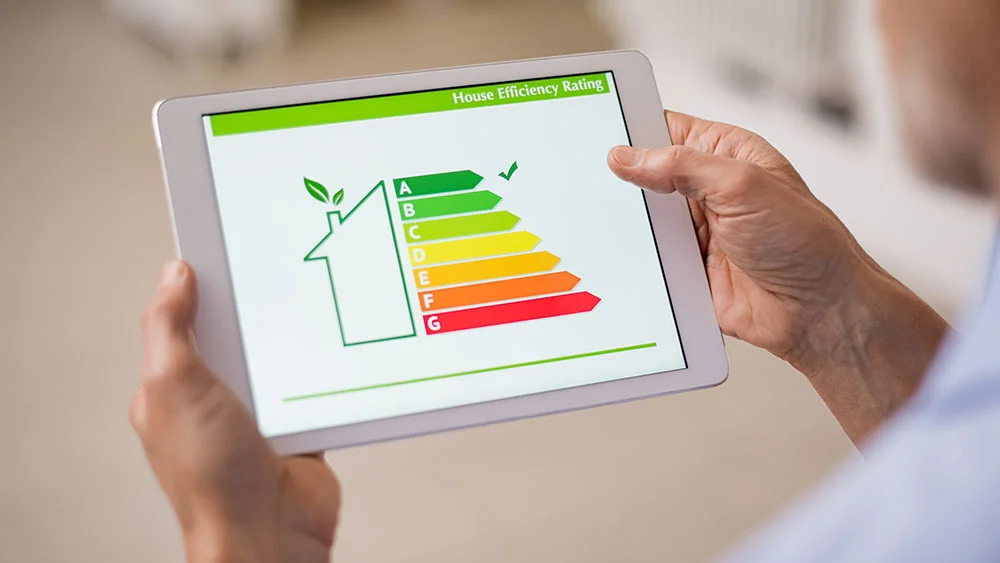
Radiant cooling systems have improved and emerged as a sustainable and efficient alternative to traditional HVAC systems in the past few decades. Ideally, a radiant cooling system can operate using less energy required to cool a place by other cooling methods. This leads to a significant reduction in carbon footprint and energy consumption.
According to a study by the Pacific Northwest National Laboratory (PNNL), using radiant cooling and proper ventilation systems like DOAS can help save up to 50% of the energy consumption in medium-sized buildings.
3. Ideal for Dry Regions
Radiant cooling systems are perfectly suited for dry areas like the Southwest. Adobe homes, known for their high thermal mass, can particularly benefit from radiant ceiling panels, which help maintain a stable temperature throughout the home.
4. Increased Comfort

Moreover, since water pipes are usually installed inside walls or floors whereas panels are usually hung with the ceiling, they do not take up any space in your room or block your way.
The cooling process in radiant cooling is quite natural. Besides, it is vibration-free and noiseless. All of this adds up to give you an ultimate indoor cooling experience full of comfort.
5. Better Air Quality
Since no forced air is circulated in the rooms in hydronic cooling systems, the air quality is cleaner. When paired with a dedicated outdoor air system (DOAS), you enjoy the fresh, treated air. It helps you maintain a healthy environment and steer clear of the risk of indoor air pollutants like allergens and pollen.
Disadvantages of Radiant Cooling
Radiation cooling has a few constraints and disadvantages, like any other system.
1. Condensation
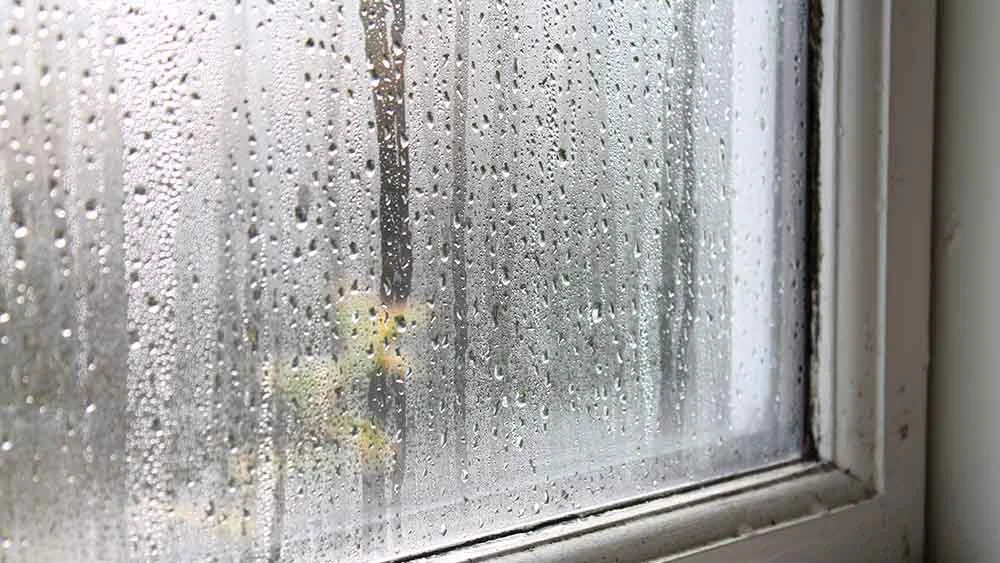
Radiant cooling systems are not widely installed because they can cause condensation. Condensation occurs when the temperature of a chilled beam or radiant slab becomes equal to or lower than the dew point. This problem is accentuated when the cooling system is installed in climates with high humidity and high temperatures. These systems are better suited for arid areas.
However, with DOAS or proper dehumidifiers, you can increase cooling capacity, achieve the ideal summer humidity levels, and eventually eliminate condensation risk.
2. Ventilation Problem in Buildings
The other major problem in radiant cooling is the lack of ability to circulate air. This means the air gets stagnant because there is not enough ventilation. If you use hydronic cooling in homes, opening up windows and doors would help. But if you live in a humid climate, hot outdoor air would raise the indoor moisture level.
In a large building with a ceiling higher than 2.7 meters, chilled beams won’t work because the air circulation will not be enough unless paired with a ventilation system like DOAS.
3. Higher Installation Costs
As radiant cooling covers most of the ceiling, it’s installtion cost is quite high. Plus, in most climates, an additonal air conditioner may be required to manage the humidity levels.
4. Hard to Install
It is better to install radiant slabs while building a house or a building. If you want to install radiant slabs in an already-built house, you must tear up your whole ceiling or floor to install the system. In such cases, you can use chilled beams. Another issue is you would have a hard time finding a professional to install the system in your house because of the limited use of radiant cooling in the US.
5. Water Damage
Radiant cooling systems can cause water damage because of high moisture levels caused by condensation and pipe leakage. Water leaks can lower the cooling capacity of the radiant system, and the moisture caused by condensation can lead to mold growth.
In Conclusion
Radiant cooling is a good solution to fight off summer heat without racking up your energy bills. The upside of this way of cooling is reduced carbon footprint and energy consumption without compromising your comfort. However, the installation is a bit tricky, and you need to have a proper ventilation system to avoid some downsides like condensation.









1 Comment. Leave new
The modern radiant cooling/heating system comes with condensation point control, DOAS which filters dust and moisture from incoming air, and a heat exchanger to recycle chilled or heated air upon exiting the house.
The traditional forced air system tends to be energy-inefficient, noisy, dry indoor air to an uncomfortable level in arid areas such as the Western Mountain regions.
The main problem with adopting the DOAS + radiant system is the cost (for lack of mass market) and lack of skilled labor.